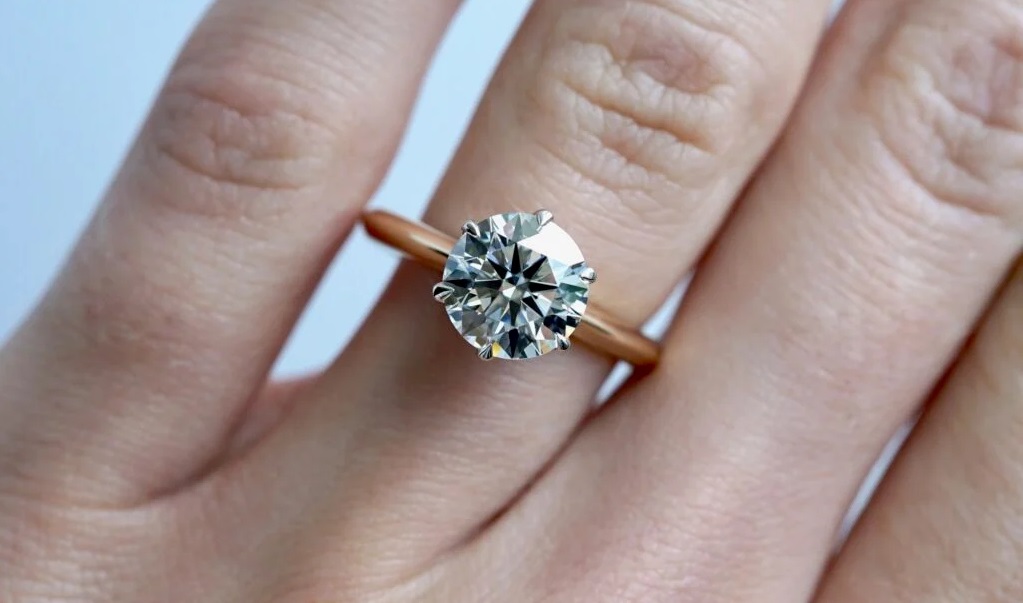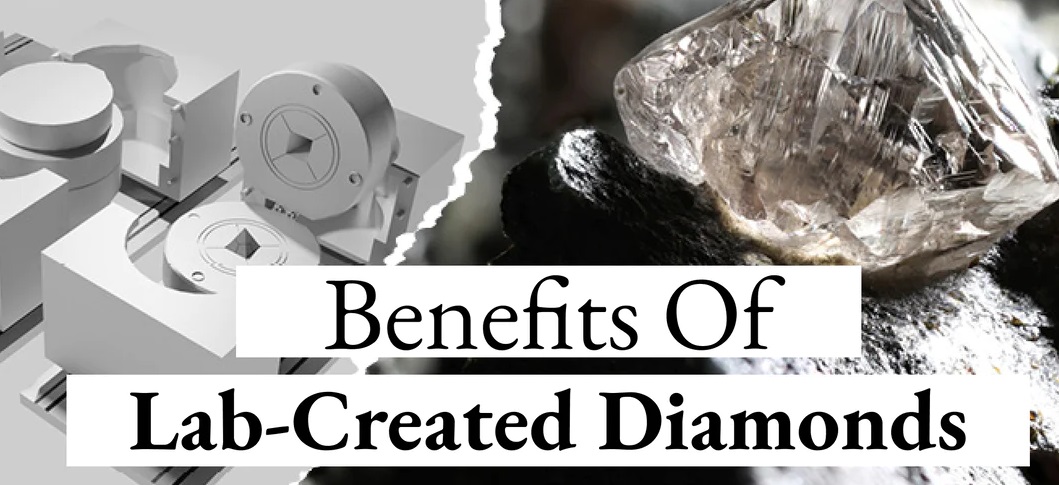Why not to Buy Lab Grown Diamonds – A Comprehensive Guide
In recent years, the diamond industry has witnessed a surge in the popularity of lab-grown diamonds, presenting consumers with an alternative to naturally occurring diamonds. However, the decision to choose between lab-grown and natural diamonds is multifaceted, involving considerations ranging from myths and facts to personal values. In this comprehensive guide, we explore the reasons why some may be hesitant to buy lab-grown diamonds, debunk common myths, and delve into the factors influencing the choice between lab-grown and natural diamonds.
Why Not to Buy a Lab-Grown Diamond: The Myths & Facts
The emergence of lab-grown diamonds has reshaped the landscape of the diamond industry, offering an alternative to naturally occurring diamonds. However, misconceptions and myths surrounding lab-grown diamonds persist, influencing the decisions of potential buyers. In this exploration, we aim to debunk common myths and shed light on the facts surrounding lab-grown diamonds, providing a comprehensive guide for those contemplating their diamond purchase.

Myth 1: Lab-Grown Diamonds Lack Value
Fact: Lab-grown diamonds possess the same physical, chemical, and optical properties as natural diamonds. They are valued based on the universally accepted criteria known as the 4Cs—cut, color, clarity, and carat weight. The only distinction lies in their origin, not their intrinsic value.
Myth 2: Lab Diamonds Are Not as Durable
Fact: Lab-grown diamonds share the exceptional hardness and durability inherent in natural diamonds. Both are composed of carbon atoms arranged in a crystalline structure, making them equally resilient to scratches and suitable for everyday wear.
Myth 3: Lab Diamonds Look Different
Fact: To the naked eye, lab-grown diamonds are virtually indistinguishable from natural diamonds. They exhibit the same brilliance, fire, and scintillation, capturing and reflecting light in a manner that mirrors their natural counterparts.
Myth 4: Lab Diamonds Contribute to Ethical Concerns
Fact: While lab-grown diamonds are often chosen for ethical reasons, it is crucial to recognize that natural diamonds can also be ethically sourced. Initiatives like the Kimberley Process ensure responsible diamond mining practices, mitigating concerns related to ethical and human rights issues.
Myth 5: Lab-Grown Diamonds Have No Resale Value
Fact: Lab-grown diamonds can indeed have resale value. The market for lab-grown diamonds is evolving, and as awareness and acceptance grow, so does the resale market. Moreover, the resale value is influenced by factors such as the diamond’s quality, craftsmanship, and market demand.
Why Do People Choose Lab-Grown Diamonds?
- Ethical Considerations:
- Lab-grown diamonds appeal to consumers seeking an ethical and environmentally conscious alternative, avoiding the potential negative impacts associated with traditional diamond mining.
- Cost Savings:
- The affordability of lab-grown diamonds attracts budget-conscious consumers, offering a way to acquire a larger or higher-quality diamond at a lower cost compared to natural diamonds.
- Customization:
- Lab-grown diamonds provide greater flexibility for customization, allowing consumers to specify characteristics such as cut, color, and clarity according to personal preferences.
Should You Choose Lab-Grown or Natural Diamonds?
The decision between lab-grown and natural diamonds is a personal one, influenced by various factors:
- Sentimental Value:
- Natural diamonds, formed over geological time, may hold sentimental value for those who appreciate the geological significance and enduring nature of these gems.
- Environmental Considerations:
- Lab-grown diamonds are favored by environmentally conscious consumers who seek to minimize the ecological footprint associated with traditional diamond mining.
- Budget Constraints:
- Lab-grown diamonds present a cost-effective alternative, catering to those prioritizing budget considerations without compromising on diamond quality.
Should You Buy a Lab Diamond or a Natural Diamond?
The decision between a lab-grown and a natural diamond is a personal one, influenced by various factors:
- Sentimental Value:
- Natural diamonds, often formed over millions of years, may hold sentimental value for those who appreciate the historical and geological significance of these gems.
- Environmental Considerations:
- Lab-grown diamonds may appeal to environmentally conscious consumers who seek a lower ecological footprint associated with the diamond industry.
- Budget Constraints:
- Lab-grown diamonds offer a cost-effective alternative for those who prioritize budget considerations without compromising on quality.
Are Lab Diamonds Real Diamonds?
Yes, lab-grown diamonds are indeed real diamonds. They share the same physical, chemical, and optical properties as natural diamonds, and they are composed of carbon atoms arranged in a crystalline structure. The primary distinction between lab-grown and natural diamonds lies in their origin:
- Formation Process:
- Natural Diamonds: Formed deep within the Earth’s mantle under high pressure and temperature over millions of years, natural diamonds are the result of carbon atoms crystalizing in specific conditions.
- Lab-Grown Diamonds: Created through technological processes that replicate the conditions under which natural diamonds form. These processes can include High Pressure High Temperature (HPHT) or Chemical Vapor Deposition (CVD) methods.
- Composition:
- Natural Diamonds: Mined from the Earth, natural diamonds are extracted from kimberlite pipes or alluvial deposits and are the product of geological processes.
- Lab-Grown Diamonds: Produced in controlled environments using advanced technologies to mimic the natural growth of diamonds. They have the same chemical composition and crystal structure as natural diamonds.
- Hardness and Durability:
- Both Types: Natural and lab-grown diamonds are equally hard and durable, scoring a perfect 10 on the Mohs scale of mineral hardness. This makes them suitable for various types of jewelry and ensures long-lasting beauty.
- Visual Appearance:
- Both Types: To the naked eye, lab-grown diamonds are virtually indistinguishable from natural diamonds. They exhibit the same brilliance, fire, and scintillation that are characteristic of diamonds.
- Grading Standards:
- Both Types: Lab-grown diamonds are graded using the same standards as natural diamonds. The Gemological Institute of America (GIA) and other reputable gemological laboratories provide grading reports for lab-grown diamonds, assessing cut, color, clarity, and carat weight.
What Are the Benefits of Lab-Created Diamonds?

- Ethical Sourcing:
- Lab-grown diamonds are considered a more ethical option for those concerned about human rights issues associated with traditional diamond mining.
- Environmental Impact:
- The production of lab-grown diamonds generally has a lower environmental impact compared to mining natural diamonds.
- Customization:
- Lab-grown diamonds offer greater flexibility in terms of customization, allowing consumers to choose specific characteristics.
Conclusion
The choice between lab-grown and natural diamonds ultimately hinges on individual preferences, values, and priorities. While lab-grown diamonds offer ethical and budget-friendly alternatives, natural diamonds continue to symbolize the timeless beauty and geological heritage that appeal to many. By understanding the myths and facts surrounding lab-grown diamonds, consumers can make informed decisions aligned with their personal values and preferences.